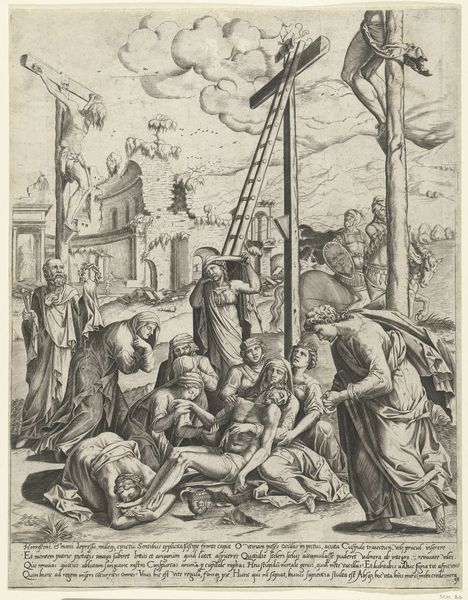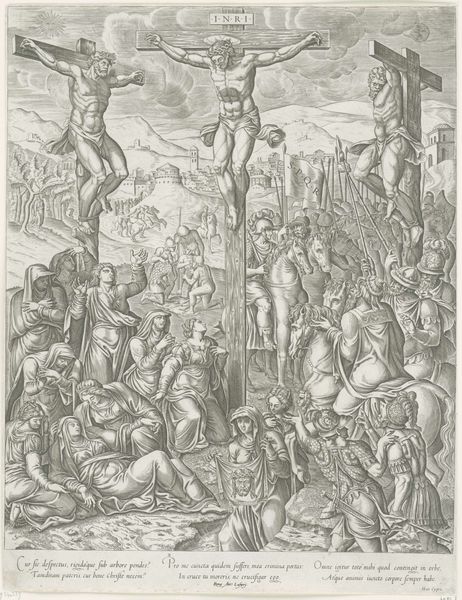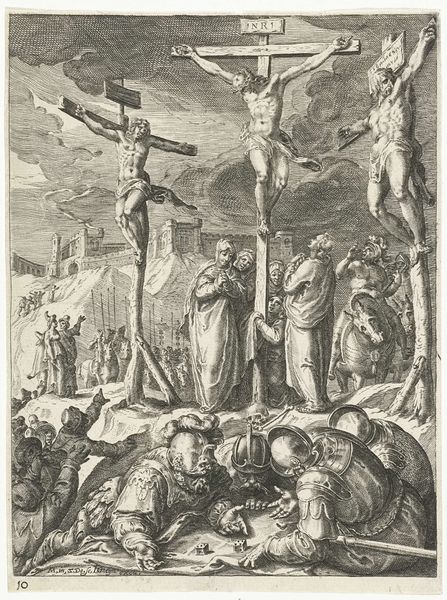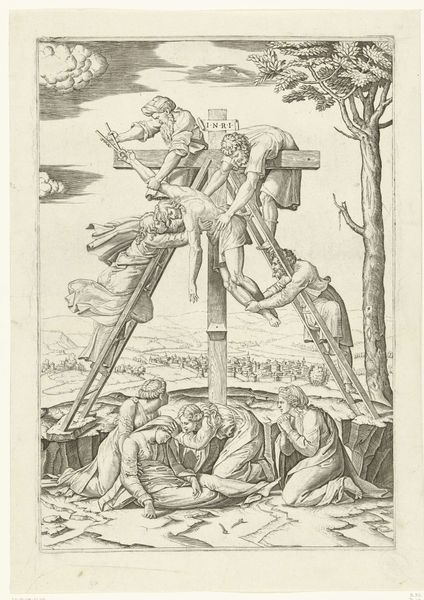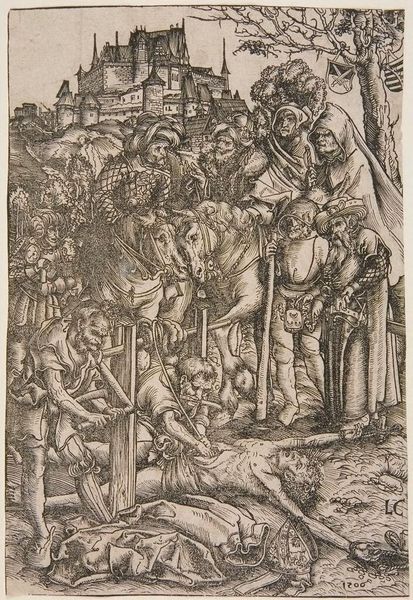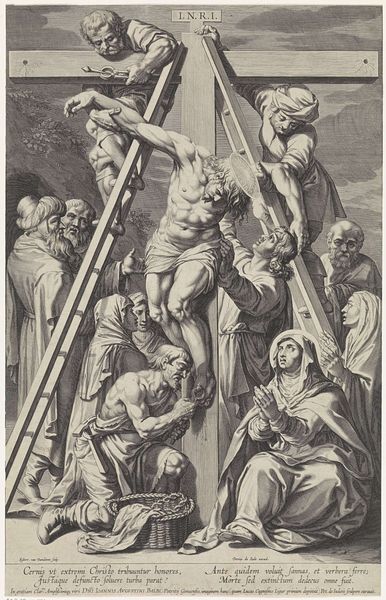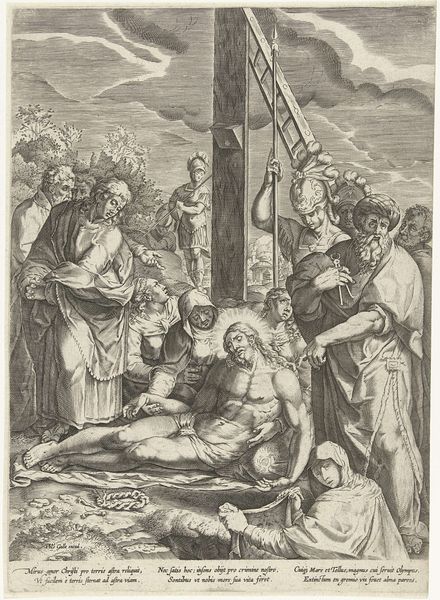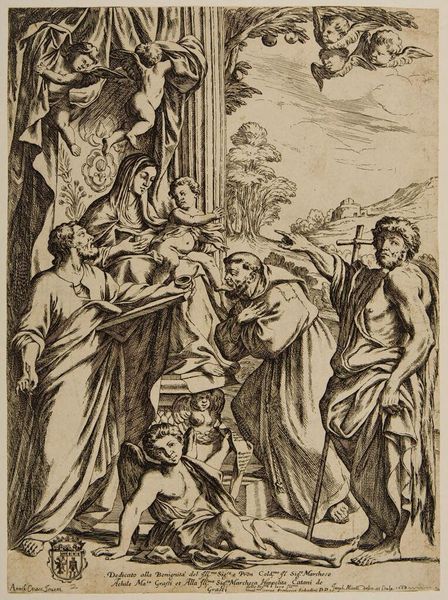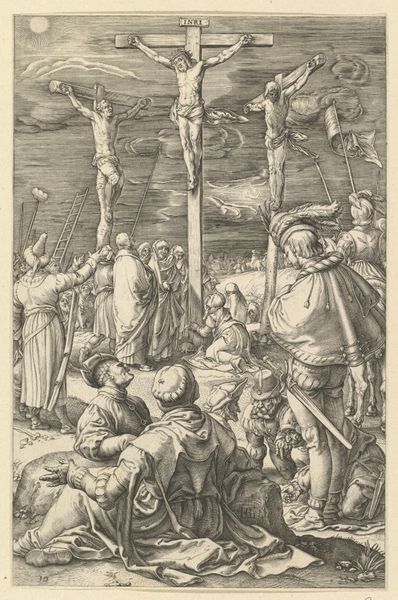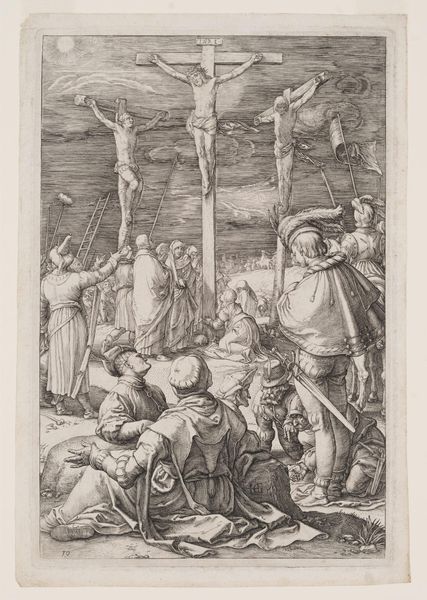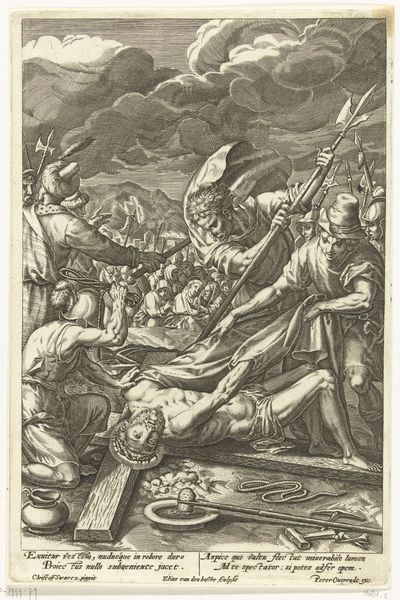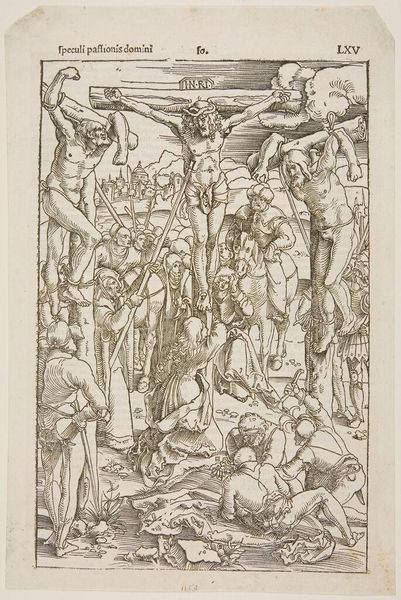
Copyright: CC0 1.0
Curator: Cornelis Bos, active in the mid-16th century, created this engraving, Descent from the Cross, now residing at the Harvard Art Museums. Editor: It’s striking how Bos uses such precise lines to convey such profound grief. The entire scene seems to sag with sorrow. Curator: Absolutely, the figures are carefully arranged to guide the viewer's eye. Notice how the crosses form a visual anchor, juxtaposed with the chaotic emotion of the figures below. The ladder also signifies a transition, a descent from the divine to the human. Editor: And the Roman soldiers lingering in the background—they're a stark reminder of the political forces at play. It underscores how Christ's death was a public event, shaped by the power structures of the time. Curator: The instruments of the Passion, too, become symbols of not just suffering, but of spiritual deliverance. Each figure responds in their own way, reflecting various emotional stages of mourning. Editor: Seeing this reminds me how artists used these images to shape public sentiment, reinforcing religious doctrine while simultaneously providing a space for collective grief and reflection during turbulent periods in history. Curator: Indeed, the visual language speaks volumes about cultural memory. The Descent from the Cross continues to resonate as a powerful emblem of human suffering and redemption. Editor: It’s fascinating to consider how the image has been reinterpreted across different eras.
Comments
No comments
Be the first to comment and join the conversation on the ultimate creative platform.
